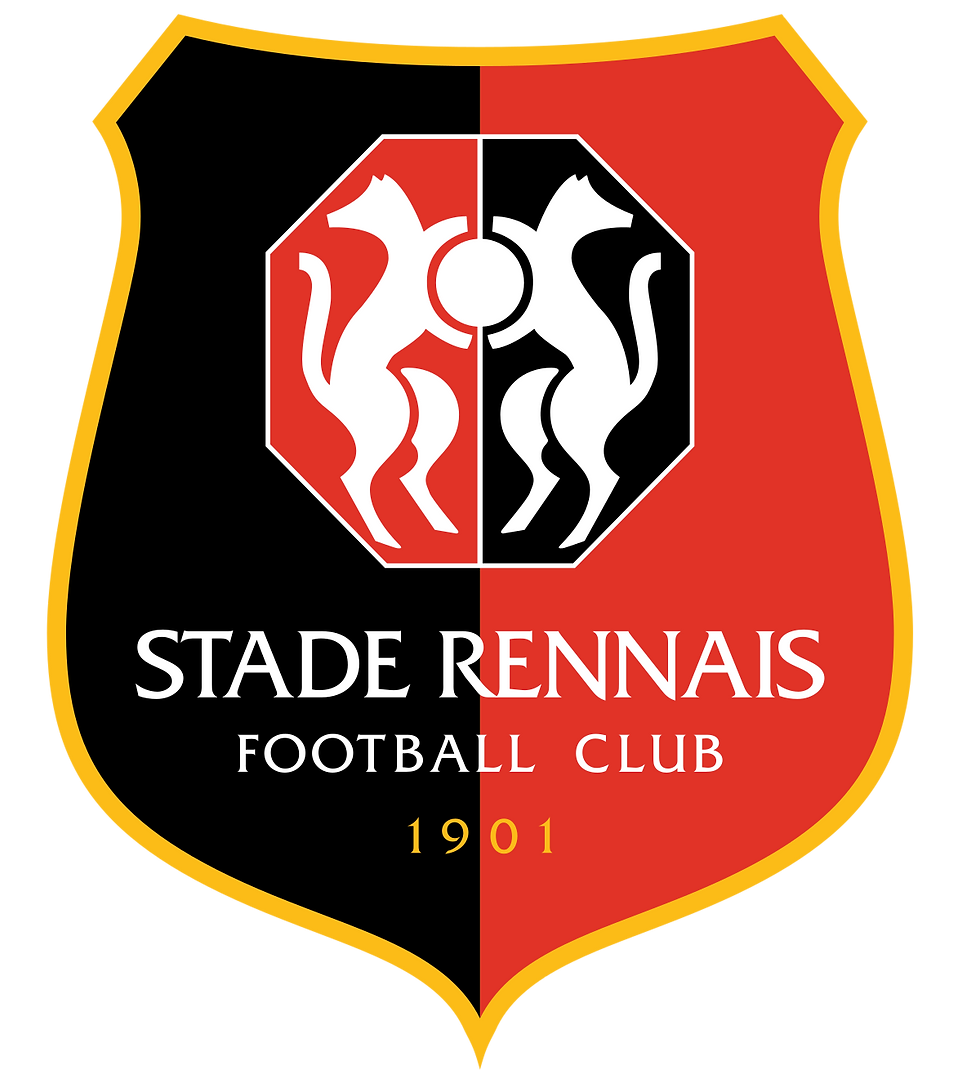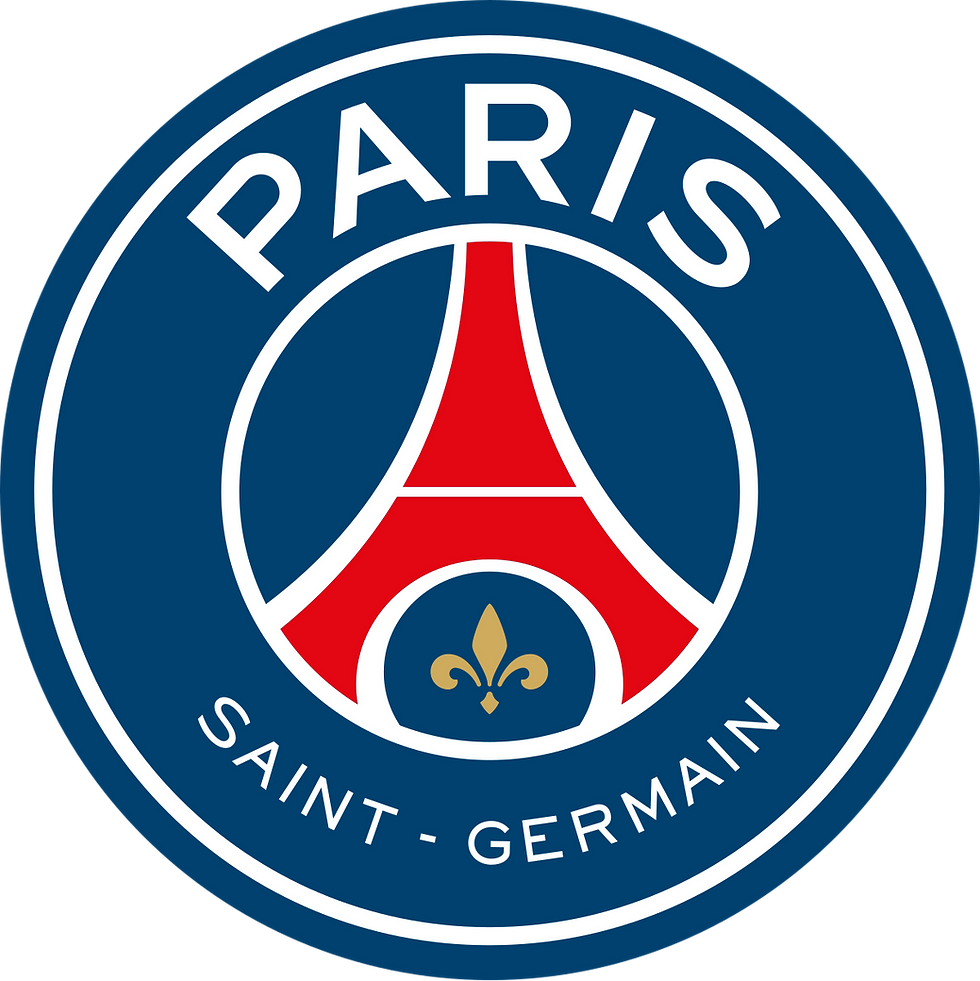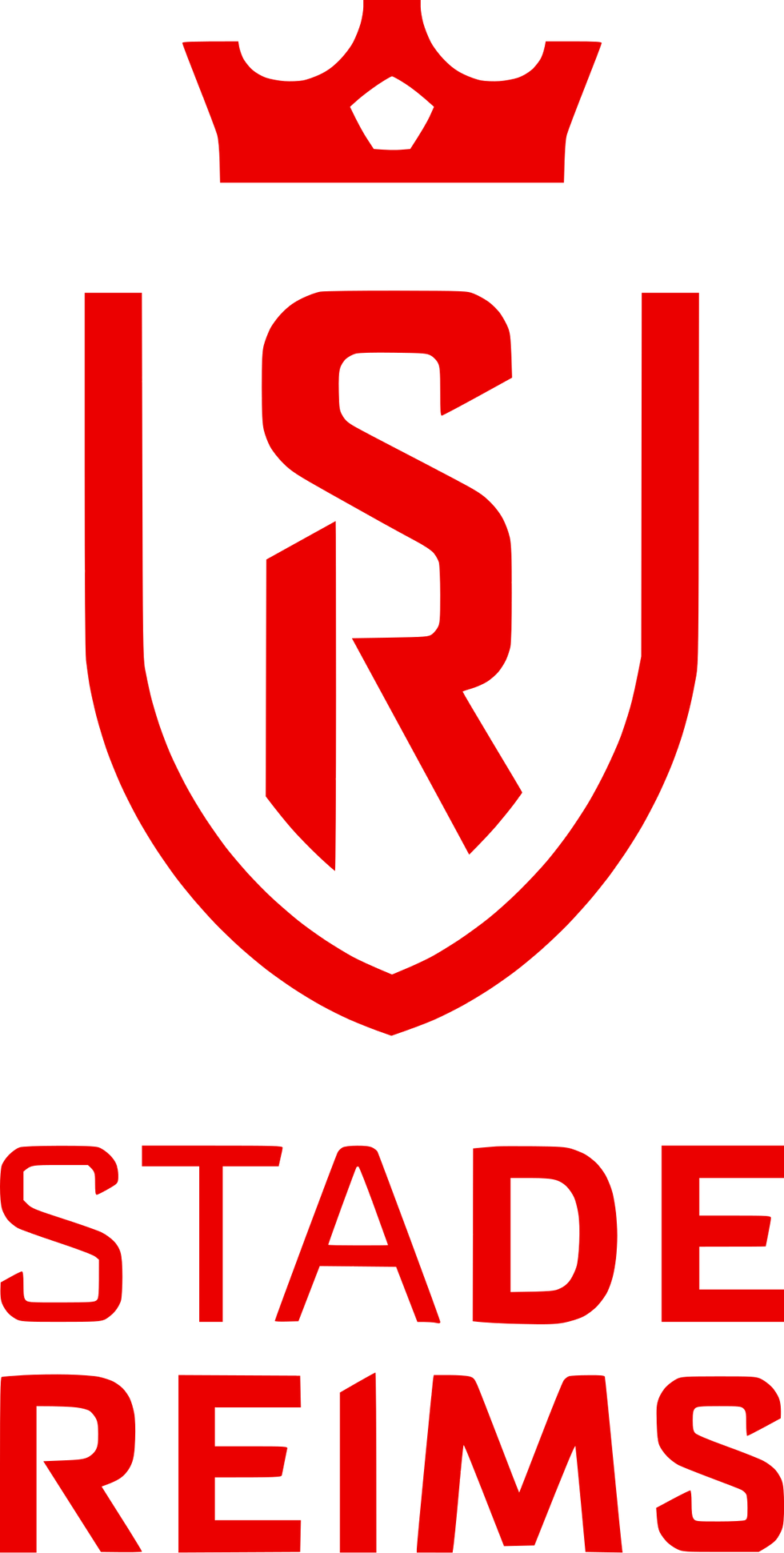Stade Rennais Football Club
- Paul Grange

- Jul 22
- 3 min read

Welcome to Rennes, the historic capital of Brittany and proud home of Stade Rennais Football Club. So, let's visit this storied region of France and #GetTheBadgeIn to see what we can learn.
The most distinctive feature of the Stade Rennais badge is those two white animals—the ermines (a type of stoat)—flanking either side of the badge and holding a ball. In heraldry, "ermine" refers both to a fur pattern — white with small black shapes representing the animal's tail—and the animal itself, which has a white winter coat. Ermines have been closely associated with Brittany since the Middle Ages.
In local legend it was said the animal would rather die than soil its white coat, leading to the Breton motto “Kentoc’h mervel eget bezan saotret” – “Rather death than defilement.” The fur itself was once reserved for royalty, worn as a sign of dignity and authority. The Duchy of Brittany adopted the ermine pattern for its flag in the 14th century, and even today, the black ermine spots (in heraldry they look like upturned arrowheads or feathers with (usually) three dots above them) feature prominently on the modern Breton flag—the Gwenn ha Du.
The inclusion of ermines on the Stade Rennais crest, added in the 1970s, is a deliberate nod to this deeper regional identity. It connects the club not only to its city but to a broader Breton story of independence and cultural pride.
The Duchy of Brittany existed as a feudal state from 939 to 1547, covering the northwestern peninsula of France. It maintained its own rulers, customs, and military ambitions, often in uneasy competition with neighbouring powers like Normandy (who spawned some chap called William who conquered England…). Duke Alain Barbetorte, the first ruler of the duchy, is central to its legends—especially the story in which he witnessed an ermine stand its ground rather than flee into the mud, supposedly inspiring the region’s famous motto.
Today the region is still known for its strong Celtic heritage, with its own language (Breton), music, and myths. The region is dotted with medieval towns like Dinan and Vannes, dramatic coastlines, and islands such as Belle-Île. It's also home to ancient sites like the Carnac Stones which are older than Stonehenge. Breton food is also famous although you probably don’t know it —think crêpes, galettes (pastries) and local cider. Festivals like the Interceltique in Lorient celebrate its rich traditions, while bilingual road signs and the Gwenn ha Du flag reflect a proud and distinct identity.
This strong cultural identity continues to shape how Stade Rennais sees itself today. The club was founded in March 1901 by a group of students and quickly became a central part of the city’s sporting life and identity. After merging with FC Rennais in 1904, it became Stade Rennais Université Club and went on to win the inaugural Brittany Football League title in 1903.
The early 20th century saw the club grow in strength, helped by the influence of Welsh player-manager Griffith, who introduced English-style tactics and led Rennes to league wins in 1908 and 1909. While the club has never been a dominant force in French football, it has built a reputation for consistency, a strong academy, and a clear regional identity. Players such as Ousmane Dembélé and Eduardo Camavinga emerged from its youth system, further enhancing its profile.
Today, Stade Rennais is owned by Groupe Artémis, the private holding company of François Pinault. Founded in 1992, Artémis controls a wide portfolio across fashion, art, wine, and media—including luxury giants like Gucci and Balenciaga under Kering, Christie’s auction house, and Château Latour vineyards. Stade Rennais has benefitted from this modern, well-funded backing. The club has invested in youth development, infrastructure, and long-term planning, aiming for sustainability as well as success.
This is a team of more than just stoic stoats – it is the spiritual heart of a unique, distinct and proud part of the world that long predates the French nation.







Comments